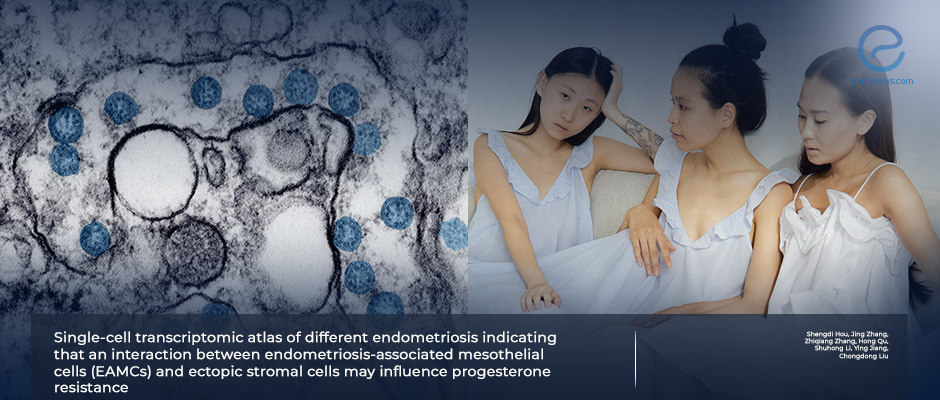Mapping the Cellular Landscape of Endometriosis and Progesterone Resistance
Apr 16, 2025
Mesothelial–Stromal Interactions May Drive Progesterone Resistance in Endometriosis Subtypes, Single-Cell Study Finds
Key Points
Limitations:
- There was only 1 deep-infiltrating endometriosis sample.
- The samples had few epithelial cells.
- Only bioinformatics and search literature were applied for the interaction analysis.
Highlights:
- This study by the team of Liu from China, mapped the single-cell transcriptomic landscape of peritoneal, deep-infiltrating, and ovarian endometriosis.
- Distinct cellular ecosystems were identified across endometriosis subtypes, highlighting their biological heterogeneity.
Importance:
-
Findings offer new insights into how stromal–mesothelial interactions may contribute to progesterone resistance—one of the major barriers in endometriosis treatment.
What’s done here:
- Single-cell RNA sequencing on surgical biopsies from three types of endometriotic lesions were evaluated.
- Comparative transcriptomic analyses focused on cell populations, differentiation pathways, and hormone signaling profiles.
Key results:
- Mesothelial cells were present in all lesion types and showed subtype-specific transcriptional states.
- Endometriosis-associated mesothelial cells displayed varying degrees of epithelial-to-mesenchymal transition, potentially modulating local progesterone response.
- Crosstalk between ectopic stromal cells and endometriosis-associated mesothelial cells was implicated in shaping the microenvironment and hormonal resistance.
Limitations:
- There was only 1 deep-infiltrating endometriosis sample, limiting subtype-specific resolution; the samples had few epithelial cells.
- Only bioinformatics and search literature were applied for the interaction analysis; functional interactions were inferred from transcriptomic data and literature mining, without experimental validation.
Lay Summary
A new study published in he peer-reviewed scientific journal Clinical and Translational Medicine offers a single-cell transcriptomic atlas of peritoneal endometriosis, deep-infiltrating endometriosis (DIE), and ovarian endometriosis, shedding light on the cellular heterogeneity and potential mechanisms driving progesterone resistance across subtypes.
Researchers from the Department of Obstetrics and Gynecology at Capital Medical University Affiliated Beijing Chaoyang Hospital, led by Dr. Chongdong Liu, analyzed surgical biopsy samples from six patients using single-cell RNA sequencing. This high-resolution approach identified five major cell types and 44 cellular subpopulations across the lesions and found that each type of endometriosis had a unique mix of cells and gene activity, that would help us to better understand the underlying mechanisms associated with variations in progesterone resistance in different types of endometriosis.
One key finding was the presence of a special type of mesothelial cell—normally found lining the abdominal cavity—in all three types of lesions. These cells showed signs of changing into more mobile, flexible forms through a process called epithelial-to-mesenchymal transition, which may influence how the tissue behaves and responds to treatment.
The researchers also discovered that these mesothelial cells appear to communicate closely with stromal cells in the lesions. This interaction may interfere with how stromal cells respond to progesterone, a hormone often used in endometriosis treatment. Specifically, a signaling pathway involving fibronectin and AKT proteins may be part of the reason some patients don’t respond well to hormonal therapy.
The study underscores the cellular complexity of endometriosis and highlights the potential of targeting mesothelial–stromal interactions as a therapeutic strategy, and the findings help explain why some types of endometriosis are harder to treat than others and suggest that targeting these cell-to-cell interactions could lead to more effective therapies in the future.
Research Source: https://pubmed.ncbi.nlm.nih.gov/39968688/
Peritoneal endometriosis deep-infiltrating endometriosis DIE ovarian endometriosis epithelial to mesenchymal transition progesterone resistance

